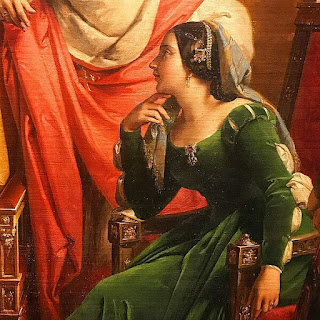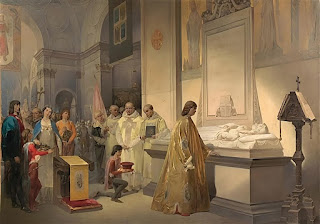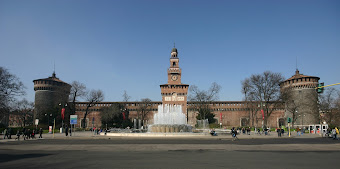Italy’s biggest-selling daily newspaper
 |
| The first edition of Corriere della Sera, published 149 years ago |
Of the country's 22 newspapers with a nationwide circulation, only Il Sole 24 Ore, which made its first appearance in 1865, and La Stampa, which launched in 1866, have a longer continuous history than Corriere della Sera.
Based in Milan, Corriere once sold more than one million copies each day. In common with newspapers across the globe, daily sales have tumbled as readers switch to online sources for news coverage. Yet, even though daily sales have slipped to below 250,000 today, it outstrips nearest rival La Repubblica by around 90,000.
Corriere’s founding-editor was Eugenio Torelli Viollier, a Naples-born Milan journalist who envisaged a newspaper that would establish a reputation for objective analysis, with a centre-right stance in its political standpoint.
Initially, the ‘Evening Courier’, as the name translates, consisted of just four pages, each of five columns, including an editorial written by Torelli Viollier and the first instalment of a serial novel. Remarkably, the design of the newspaper’s title masthead for the first edition has never changed. Some 15,000 copies were printed, with a cover price of five cents within the city of Milan, seven outside.
The first edition had a double-date, March 5-6, indicating that it was intended as an evening paper that would remain on sale the following morning. The first copies were in the hands of news vendors in Piazza della Scala by 9pm on the evening of the 5th
 |
| Eugenio Torelli Viollier was the newspaper's founding editor |
By the time Torelli Viollier stepped down in 1898 the circulation had hit 100,000, although its best years were still to come under his successor, Luigi Albertini.
Albertini, a champion of liberalism and a vigorous opponent of socialism and clericalism, had worked in London as a foreign correspondent for La Stampa and made a point of studying the operating methods of The Times while based there.
After initially joining Corriere della Sera as editorial secretary under Torelli Viollier, he found himself effectively in charge in 1900, taking the role of editorial director in the same year in which Torelli Viollier succumbed to heart disease at his home in Via Paleocapa, near the Castello Sforzesco in central Milan.
Albertini invested in the paper, installing modern equipment and under his direction, Corriere della Sera became the most widely read and respected daily paper in Italy, despite his relentless criticism of Giovanni Giolotti, who was five times Italy’s prime minister between 1892 and 1921, for his willingness to make political deals with socialists.
In his time, the architect Luca Beltrami designed an impressive factory building in Via Solferino, the main street of the Brera district of central Milan, which remains its headquarters to this day.
 |
| Enzo Biagi was among Corriere's many famous writers |
The paper thereafter took a pro-Mussolini position and it was not until after World War Two that it returned to its traditional values with another anti-Fascist, Mario Borsa, at the helm. In order to distance itself from Mussolini’s regime, it was relaunched as Nuovo Corriere della Sera in 1946, keeping that title until 1959. In the 1960s, the Crespi family sold part of their shareholding to the Rizzoli publishing house, from which evolved the current owners, the RCS Media Group.
Since its inception, the pages of Corriere have hosted some of Italy’s greatest writers and intellectuals, including philosopher Benedetto Croce, dramatist Luigi Pirandello, the poets Massimo Bontempelli and Gabriele D’Annunzio and the Nobel Prize-winning author Eugenio Montale. The cultural pages have featured contributions from film director Pier Paolo Pasolini, novelist Alberto Moravia and historian and novelist Umberto Eco, while the roll call of giants from the journalistic world includes Dino Buzzati, Indro Montanelli, Enzo Biagi and Giovanni Spadolini.
 |
| Corriere Della Sera's headquarters is in the Via Solferino, a street in the Brera district of Milan |
Its cobbled streets, historic buildings and vibrant cultural scene and nightlife make the Brera district, home of Corriere della Sera’s headquarters in Via Solferino, a big draw for visitors to Milan. Often regarded as the artistic heart of the city, Brera's roots can be traced back to the Roman era, but it was during the Renaissance that it flourished, becoming a hub for artists and intellectuals. Today, it is home to the renowned Pinacoteca di Brera art gallery, which houses an extensive collection of Italian Renaissance masterpieces, and the Brera Academy of Fine Arts. Hidden behind the Palazzo Brera is the Orto Botanico di Brera, a botanical garden established in 1774. Located nearby is the Brera Astronomical Observatory, a centre for astronomical research and education since 1762.
Look for a Milan hotel with Expedia
 |
| The Castello Sforzesco in Milan, almost 600 years old, is one of the city's important sights |
Not far from Via Paleocapa, where founding-editor Eugenio Torelli-Viollier lived, one the main sights in Milan is the impressive Sforza castle, Castello Sforzesco, built by Francesco Sforza, Duke of Milan, in 1450. After Ludovico Sforza became Duke in 1494, he commissioned Leonardo da Vinci to fresco several of the rooms. The castle was built on the site of the Castello di Porta Giovia, which had been the main residence in the city of the Visconti family, from which Francesco Sforza was descended. The Viscontis ruled Milan for 170 years. Renovated and enlarged a number of times in subsequent centuries, it became one of the largest citadels in Europe and now houses several museums and art collections. The Cairo metro station is opposite the main entrance to Castello Sforzesco, which is about a 20 minute walk from Milan’s Duomo.
Check out Milan accommodation with Hotels.com
Also on this day:
1696: The birth of painter Giovanni Battista Tiepolo
1827: The death of scientist Alessandro Volta
1834: The birth of soprano Marietta Piccolomini
1922: The birth of actor, writer and film director Pier Paolo Pasolini
1943: The birth of singer-songwriter Lucio Battisti


















